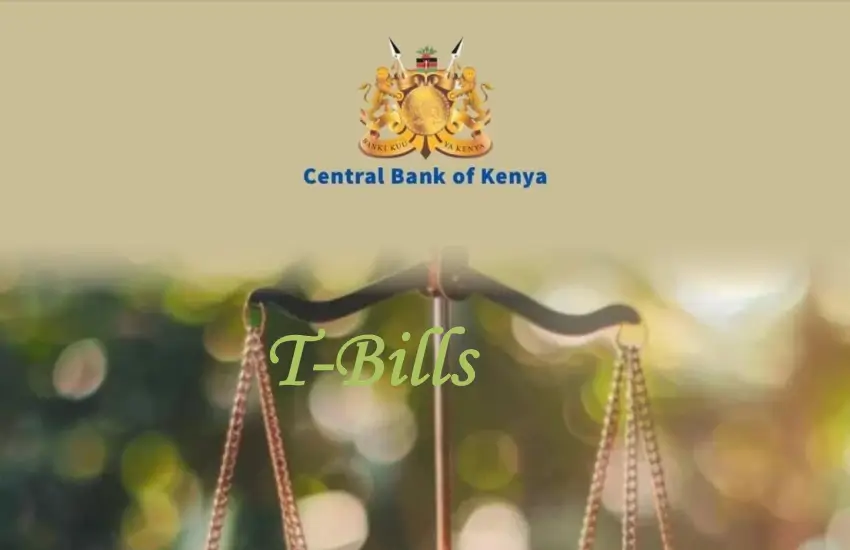Rising Activity in the Interbank Market
Kenya’s financial system has experienced a notable shift over the past week, as interbank lending surged to new highs while demand for Treasury bills contracted significantly. According to the Central Bank of Kenya (CBK), traded volumes in the interbank market rose by an impressive 118%, climbing to KES 17.24 billion compared to KES 7.9 billion the previous week.
Equally telling is the rise in transaction counts, which expanded by 121.4%, highlighting how liquidity management between commercial banks has become increasingly active. Analysts say this spike signals tightening liquidity conditions, prompting institutions to rely more heavily on each other for short-term financing.
Build the future you deserve. Get started with our top-tier Online courses: ACCA, HESI A2, ATI TEAS 7, HESI EXIT, NCLEX-RN, NCLEX-PN, and Financial Literacy. Let Serrari Ed guide your path to success. Enroll today.
The Kenya Shilling Overnight Interbank Average (KESONIA), a benchmark rate reflecting overnight borrowing costs between banks, edged up by 1.23 basis points to average 9.467%. While the increase is modest, it illustrates the gradual tightening in the money market. CBK data also confirmed that some banks tapped into the discount window facility, borrowing KES 500 million, an indication that certain players faced more acute liquidity pressures.
Treasury Bill Demand Weakens
At the same time, Kenya’s Treasury bill market painted a different picture. Subscription levels for short-term government securities fell sharply, with overall subscription dropping to 62.9%, down from 95.7% the previous week.
Investors submitted KES 15.09 billion worth of bids, of which CBK accepted 99.3%, slightly above the value of maturities. This left the government with a net borrowing position of KES 5.14 billion, reflecting the state’s ongoing need for short-term funding.
The performance of individual maturities varied significantly:
- The 364-day paper remained the strongest performer, attracting a 115.3% subscription rate, though lower than the previous week’s 131.3%. Investors were clearly seeking to lock in higher yields for longer periods amid expectations of falling rates.
- The 91-day paper saw a steep decline in demand, with subscription rates dropping to 40.5%.
- The 182-day paper performed even worse, with subscriptions at just 19.4%, signaling reduced appetite for mid-term instruments.
This skew suggests that investors prefer long-term securities that guarantee returns over a full year, especially in light of the CBK’s recent monetary policy decisions that hint at a softer interest rate outlook.
Weighted Average Rates and Interest Rate Outlook
Despite weaker demand, weighted average rates on accepted bids narrowed across all tenors:
- 91-day T-bill: 7.91% (-3.18bps)
- 182-day T-bill: 7.99% (-2.47bps)
- 364-day T-bill: 9.53% (-0.36bps)
This contraction indicates that CBK is continuing to signal easing monetary conditions, in contrast to the high-rate environment experienced through much of 2024. Analysts believe the central bank is deliberately moderating yields to lower the government’s debt servicing costs, which ballooned amid previous aggressive rate hikes designed to fight inflation.
CBK’s Long-Term Funding Strategy
Looking beyond short-term bills, the CBK announced it is seeking KES 50 billion through the reopening of two long-term bonds:
- FXD1/2018/015: 12.65% coupon, effective tenor of 7.7 years.
- FXD1/2021/020: 13.44% coupon, effective tenor of 15.9 years.
Both papers will remain on sale until October 15, 2025.
By reopening existing bonds instead of issuing new ones, the CBK aims to consolidate debt instruments, improve liquidity in the secondary bond market, and offer investors a familiar structure. This approach also helps extend the average maturity profile of government debt, reducing refinancing risks.
One decision can change your entire career. Take that step with our Online courses in ACCA, HESI A2, ATI TEAS 7, HESI EXIT, NCLEX-RN, NCLEX-PN, and Financial Literacy. Join Serrari Ed and start building your brighter future today.
Why Interbank Markets Are Surging
Economists suggest that the surge in interbank activity stems from several interlinked factors:
- Tight Liquidity Conditions – With investors favoring long-term securities over short-term bills, liquidity has become patchier, forcing banks to borrow more actively from each other.
- Government Borrowing Pressures – Kenya’s fiscal deficit continues to exert strain on domestic markets. Heavy reliance on local borrowing channels squeezes liquidity available for banks.
- Seasonal Factors – The end of the quarter often brings additional funding needs as institutions balance their books and meet regulatory requirements.
- Foreign Investor Behavior – A pullback in foreign appetite for Kenyan T-bills, particularly the shorter tenors, may also be contributing to tighter market conditions.
Market Implications for Investors
The divergence between interbank activity and Treasury bill demand provides valuable insights for different classes of investors.
- Retail Investors: The weaker performance of short-term T-bills suggests opportunities in longer-dated government securities, which continue to offer relatively higher yields.
- Institutional Investors: The surge in interbank lending indicates higher overnight borrowing costs, which could ripple into higher costs of capital for businesses in the short term.
- Foreign Investors: With the Kenyan shilling facing periodic depreciation pressure, the lower subscription in short-term securities might also reflect hesitancy among offshore players awaiting clearer currency signals.
Regional and Global Context
Kenya’s experience mirrors broader trends in emerging markets. Across Africa, countries like Nigeria and Ghana have also struggled to balance domestic borrowing needs with liquidity pressures in banking systems.
Globally, the U.S. Federal Reserve’s policy stance continues to ripple through emerging markets, influencing capital flows and investor sentiment. With the Fed expected to hold rates steady or gradually cut in late 2025, markets like Kenya may see improved appetite for government securities in the medium term.
Looking Ahead: What to Expect
- Bond Auctions: The KES 50 billion target in reopened bonds will test investor appetite for medium- and long-term maturities.
- Interest Rate Trends: If inflationary pressures remain muted, CBK may continue nudging yields lower, easing debt servicing costs but reducing returns for investors.
- Liquidity Management: Interbank markets are likely to remain active, especially if short-term borrowing costs remain elevated.
- Foreign Participation: Any signs of shilling stability could renew offshore interest in government securities, particularly the longer tenors.
Conclusion
The juxtaposition of surging interbank lending and weakening Treasury bill demand underscores the complex balancing act facing Kenya’s financial system. While banks grapple with tightening liquidity, investors are showing greater appetite for long-term securities, suggesting confidence in Kenya’s long-term fiscal and monetary stability—even as short-term risks remain.
For the CBK, the challenge will be to navigate immediate liquidity constraints while ensuring that government borrowing needs are met sustainably. The upcoming bond auction will serve as a crucial barometer for market sentiment, providing insights into whether investors remain confident in Kenya’s economic outlook heading into the final quarter of 2025.
Ready to take your career to the next level? Join our Online courses: ACCA, HESI A2, ATI TEAS 7 , HESI EXIT , NCLEX – RN and NCLEX – PN, Financial Literacy!🌟 Dive into a world of opportunities and empower yourself for success. Explore more at Serrari Ed and start your exciting journey today! ✨
Track GDP, Inflation and Central Bank rates for top African markets with Serrari’s comparator tool.
See today’s Treasury bonds and Money market funds movement across financial service providers in Kenya, using Serrari’s comparator tools.
Photo source: Google
By: Montel Kamau
Serrari Financial Analyst
2nd October, 2025
Article, Financial and News Disclaimer
The Value of a Financial Advisor
While this article offers valuable insights, it is essential to recognize that personal finance can be highly complex and unique to each individual. A financial advisor provides professional expertise and personalized guidance to help you make well-informed decisions tailored to your specific circumstances and goals.
Beyond offering knowledge, a financial advisor serves as a trusted partner to help you stay disciplined, avoid common pitfalls, and remain focused on your long-term objectives. Their perspective and experience can complement your own efforts, enhancing your financial well-being and ensuring a more confident approach to managing your finances.
Disclaimer: This article is for informational purposes only and does not constitute financial advice. Readers are encouraged to consult a licensed financial advisor to obtain guidance specific to their financial situation.
Article and News Disclaimer
The information provided on www.serrarigroup.com is for general informational purposes only. While we strive to keep the information up to date and accurate, we make no representations or warranties of any kind, express or implied, about the completeness, accuracy, reliability, suitability, or availability with respect to the website or the information, products, services, or related graphics contained on the website for any purpose. Any reliance you place on such information is therefore strictly at your own risk.
www.serrarigroup.com is not responsible for any errors or omissions, or for the results obtained from the use of this information. All information on the website is provided on an as-is basis, with no guarantee of completeness, accuracy, timeliness, or of the results obtained from the use of this information, and without warranty of any kind, express or implied, including but not limited to warranties of performance, merchantability, and fitness for a particular purpose.
In no event will www.serrarigroup.com be liable to you or anyone else for any decision made or action taken in reliance on the information provided on the website or for any consequential, special, or similar damages, even if advised of the possibility of such damages.
The articles, news, and information presented on www.serrarigroup.com reflect the opinions of the respective authors and contributors and do not necessarily represent the views of the website or its management. Any views or opinions expressed are solely those of the individual authors and do not represent the website's views or opinions as a whole.
The content on www.serrarigroup.com may include links to external websites, which are provided for convenience and informational purposes only. We have no control over the nature, content, and availability of those sites. The inclusion of any links does not necessarily imply a recommendation or endorsement of the views expressed within them.
Every effort is made to keep the website up and running smoothly. However, www.serrarigroup.com takes no responsibility for, and will not be liable for, the website being temporarily unavailable due to technical issues beyond our control.
Please note that laws, regulations, and information can change rapidly, and we advise you to conduct further research and seek professional advice when necessary.
By using www.serrarigroup.com, you agree to this disclaimer and its terms. If you do not agree with this disclaimer, please do not use the website.
www.serrarigroup.com, reserves the right to update, modify, or remove any part of this disclaimer without prior notice. It is your responsibility to review this disclaimer periodically for changes.
Serrari Group 2025












